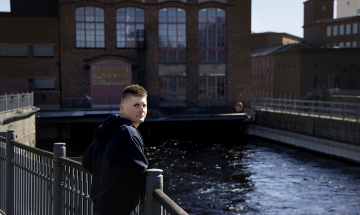Finland’s EU-presidency, bringing impact to EU Innovation Funding?
Organized since 2010, the CTO Forum is an exclusive invitational event, which collects the voices of Chief Technology Officers from Finland’s most influential companies and represents the majority of Finnish R&D investment.This time the topic of the event was to set targets for Finland’s EU presidency. The attendees expressed a unified vision to build shared goals for industry and share thoughts for an action plan regarding the presidency.
Statistics show that Finnish industry is an underperformer in EU innovation funding. Among the top 20 European companies receiving EU funding there is only one Nordic company. Similarly, there are only a couple of Finnish companies among the top 20 Nordic companies receiving EU funding.
The tide may well be changing, and it was delightful to see at the CTO Forum that interest and enthusiasm for EU funding is on the rise. Finnish success stories, such as Okmetic, UPM, Picosun and Metgen have evidently paved the way for this rising enthusiasm. Of these, catalyst-manufacturer Metgen has raised 12 MEUR in 10 projects, which has given it access to 60 partnering organizations in 15 countries and enabled its chemicals to reach 45 new products in 25 different value-chains.
Past lessons and horizons of the future
As Finland’s next presidency is on the horizon, it is good to take a look back at Finland’s previous presidency in 2006, which was a highly successful one. At the time, the most significant innovation policy achievement was the renewal of industrial platforms and EU funding. Nokia and Tekes pioneered the first European industrial platform instrument for the ICT sector, ARTEMIS. In this case, we in Finland acted as a role model for whole Europe, as both a public and a private party committed to invest significant seed money in the instrument together. This signalled the launch for renewing the whole EU funding system, which resulted in similar Public-Private-Partnerships for all sectors.
For this presidency, the level of ambition should be, at the very least, equal to the last one. We need to be able to renew EU funding instruments and bring them closer to industry. Finland’s presidency will see the preparations for the successor to Horizon 2020 funding, Horizon Europe. The new program should include funding on unforeseen levels – up to 100-160 BEUR compared to 88 BEUR in 2014-2020.
The problem until now has been that Finnish industry has seen EU funding as slow and heavy on bureaucracy. Applications are long and detailed, funding goes to projects still far from market, required consortiums hard to build, competition high with low success rates and funding calls narrow in scope and slow in implementation. This results in years of delay from indicating an idea to a commission and to receiving the money. In the end, projects are are seen as too cumbersome; thus many Finnish companies have preferred to seek funding through Business Finland, which has been more user-friendly in its approach.
Industry’s reliance in Business Finland as the sole funding partner has caused other problems. They tend to partner with only Finnish organizations, potentially missing internationalization opportunities and seeking best partners. Business Finland’s budget cuts, on the other hand, have led to failed applications and resulted in the decrease of industry’s R&D activities during recent years. Industry not competing on EU-funding leaves that money to their European competitors. Finally, on a lighter note, one could say that industry owes to Finnish taxpayers a responsibility to get more money back home from Brussels.
Industry makes the impact if it is given the chance
Many of the perceived challenges in EU funding have nevertheless been alleviated significantly. The European Commission has been able to renew funding instruments through internal product development in a way that they are increasingly faster and more open to industry’s own ideas. There is more funding for projects closer to commercialization of radical innovations. Consortiums are smaller, there are less forced partnerships for political reasons and time to money is faster when a company can freely seek funding for the theme of their choice. There are great successful pilot examples, such as SME and Fast Track to Innovation instruments, which should receive much more significant funds in the future. Public-Private-Partnerships may need renewal, but it remains the mainstream to achieve big, systemic impact.
However, perceptions are slow to change. The European Union’s marketing has not succeeded in communicating this product development process sufficiently well to drive through the message to companies. Moreover, the share of industry-friendly funding is still very small portion of the total budget.
Therefore, the time is right to influence the direction EU innovation funding takes in the future. Finland is a competitive country, with plenty to give as far as innovations are concerned. The development of instruments is important input to the EU agenda, but we should also influence the content. For instance, the broader utilization of Artificial Intelligence in all industrial sectors is one of the presidency’s key focus areas. Circular economy and solving climate change with technology already receives high support among the member states, but there is still work left.
Current EU funding for research and innovation was originally designed to serve universities and research institutes, which is also very important in ensuring best knowledge and competences in Europe. However, the real impact comes from industry, as without industrial companies, no business and jobs are created and money spent becomes costs with no financial economical returns.
But what can a single company do? The most important advice we can give to companies is: seek EU funding! Next year, the largest funding round in history is up for grabs. It is meant for you, your innovations, and your projects. Let’s work together to bring Europe back to the world’s ’s leading innovator!
Pekka Koponen
Founder, Chairman, Spinverse Ltd.
Chairman, Innovation and Competitiveness Working Group, Technology Industries of Finland



